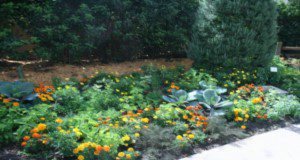Maintaining edible landscapes in a way that protects the environment is an important concern for protecting Florida’s water quality. The objective of this new 7-page publication is to introduce the framework of the Florida-Friendly Landscaping™ principles and apply the principles to guide decisions about Best Management Practices (BMPs) for care of edible landscapes. Written by Tiare Silvasy, Lynn Barber, Esen Momol, Tina McIntyre, Tom Wichman, Gail Hansen, Jen Marvin, Terra Freeman, Joseph Sewards, Wendy Wilber, and Jacqlyn Rivas.
https://edis.ifas.ufl.edu/ep594
Tag: Florida-Friendly Landscapes
Estimated Water Savings Potential of Florida-Friendly Landscaping™ Activities

To help homeowners predict the impact of implementing some of the water conservation measures listed on Florida-Friendly Landscaping™ checklist, this 5-page fact sheet offers a table of estimated water savings. Homeowners can select activities which are the best fit for their landscape and can also see which have the most conservation potential. The water savings is compared to a baseline case of typical irrigation behavior. This 5-page fact sheet was written by Mackenzie Boyer and Michael Dukes, and published by the UF Department of Agricultural and Biological Engineering, August 2015. (Photo credit: Michael Gutierrez, UF/IFAS)
http://edis.ifas.ufl.edu/ae515
Ten Strategies for Working With Your Home Owner Association to Convert to a Florida-Friendly Yard
 Many homeowners are beginning to rethink their landscapes for several reasons, including mandated water and fertilizer restrictions, increasing maintenance costs, and concern for the environment. But over sixty million people now live in neighborhoods governed by Homeowner Associations, whose regulations can make it difficult to implement some changes by mandating types of plants, percentages of turf and plant material, location of plant materials, and restricting specialty gardens to back yards. More environmentally sound landscapes are possible with careful planning and design and by using an educated and knowledgeable approach to working with the HOA board to gain approval for a new landscape. This 9-page fact sheet offers several strategies for working within HOA regulations to gain approval for a Florida-Friendly landscape. Written by Gail Hansen and Claire Lewis, and published by the UF Department of Environmental Horticulture, February 2015. (Photo credit: Florida-Friendly Landscaping™ Program)
Many homeowners are beginning to rethink their landscapes for several reasons, including mandated water and fertilizer restrictions, increasing maintenance costs, and concern for the environment. But over sixty million people now live in neighborhoods governed by Homeowner Associations, whose regulations can make it difficult to implement some changes by mandating types of plants, percentages of turf and plant material, location of plant materials, and restricting specialty gardens to back yards. More environmentally sound landscapes are possible with careful planning and design and by using an educated and knowledgeable approach to working with the HOA board to gain approval for a new landscape. This 9-page fact sheet offers several strategies for working within HOA regulations to gain approval for a Florida-Friendly landscape. Written by Gail Hansen and Claire Lewis, and published by the UF Department of Environmental Horticulture, February 2015. (Photo credit: Florida-Friendly Landscaping™ Program)
http://edis.ifas.ufl.edu/ep513
Homeowner Best Management Practices for the Home Lawn
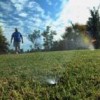 A healthy lawn is an important component of an urban landscape. Loss of turf health and misuse of fertilizers can result increased nonpoint source pollution, so homeowners should use Best Management Practices when maintaining their lawns. Best Management Practices follow Florida-Friendly Landscaping™ principles, developed for maintenance of a healthy landscape that does not contribute to nonpoint source pollution. This 6-page fact sheet provides easy-to-follow tips on Florida-friendly lawn maintenance. Written by Laurie E. Trenholm, and published by the UF Department of Environmental Horticulture, October 2014.
A healthy lawn is an important component of an urban landscape. Loss of turf health and misuse of fertilizers can result increased nonpoint source pollution, so homeowners should use Best Management Practices when maintaining their lawns. Best Management Practices follow Florida-Friendly Landscaping™ principles, developed for maintenance of a healthy landscape that does not contribute to nonpoint source pollution. This 6-page fact sheet provides easy-to-follow tips on Florida-friendly lawn maintenance. Written by Laurie E. Trenholm, and published by the UF Department of Environmental Horticulture, October 2014.
http://edis.ifas.ufl.edu/ep236
Demonstration Gardens in the University of Florida Cooperative Extension Service
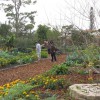 UF/IFAS Extension supports a network of demonstration gardens throughout the state. These gardens showcase plants and practices appropriate for their locations and are open to the community free of charge. Learning opportunities abound for home gardeners and landscape professionals on design, planting, and maintenance procedures. The gardens typically have interpretative materials available, including signs, brochures, and self-guided tours. Many are sites for gardening festivals, workshops, and plant sales. This 27-page directory was written by Sydney Park Brown, Kim Taylor, and Emily Eubanks, and published by the UF Department of Environmental Horticulture, March 2014.
UF/IFAS Extension supports a network of demonstration gardens throughout the state. These gardens showcase plants and practices appropriate for their locations and are open to the community free of charge. Learning opportunities abound for home gardeners and landscape professionals on design, planting, and maintenance procedures. The gardens typically have interpretative materials available, including signs, brochures, and self-guided tours. Many are sites for gardening festivals, workshops, and plant sales. This 27-page directory was written by Sydney Park Brown, Kim Taylor, and Emily Eubanks, and published by the UF Department of Environmental Horticulture, March 2014.
http://edis.ifas.ufl.edu/ep108
Incorporating Woody Ornamentals into Residential Landscapes to Reduce Nutrient Leaching
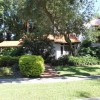 Urban landscapes in Florida are typically dominated by turfgrass monoculture, with ornamental landscape plants comprising only a small portion of the landscape. Incorporating more woody ornamentals into your landscape can reduce fertilization and irrigation demand and help reduce nutrient leaching losses from your yard—a combination that will help protect Florida’s water resources. This 3-page fact sheet was written by Drew C. McLean, Andrew K. Koeser, Amy L Shober, Zhixuan Qin, Gitta Hasing, and Richard C. Beeson, and published by the UF Department of Environmental Horticulture, July 2014.
Urban landscapes in Florida are typically dominated by turfgrass monoculture, with ornamental landscape plants comprising only a small portion of the landscape. Incorporating more woody ornamentals into your landscape can reduce fertilization and irrigation demand and help reduce nutrient leaching losses from your yard—a combination that will help protect Florida’s water resources. This 3-page fact sheet was written by Drew C. McLean, Andrew K. Koeser, Amy L Shober, Zhixuan Qin, Gitta Hasing, and Richard C. Beeson, and published by the UF Department of Environmental Horticulture, July 2014.
http://edis.ifas.ufl.edu/ep503
Using Social Norms to Increase Behavior Change in Sustainable Landscaping
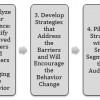 When Extension agents work to encourage behavioral changes in their community through educational programming, they may already be using some elements of social marketing. Extension educators can use an understanding of their clients’ reservations and inclinations toward a behavior, or their benefits and barriers, to develop strategies that encourage behavior change. Common strategies include prompts and reminders, incentives, and changing social norms. These strategies may be piloted on a small scale, modified if necessary, and then implemented on a large scale and further evaluated. This publication’s purpose is to describe the use of social norms as a social marketing strategy and make recommendations for applying social norms as a tool in Extension programming. This 5-page fact sheet was written by Laura Sanagorski and Paul Monaghan , and published by the UF Department of Agricultural Education and Communication, February 2014.
When Extension agents work to encourage behavioral changes in their community through educational programming, they may already be using some elements of social marketing. Extension educators can use an understanding of their clients’ reservations and inclinations toward a behavior, or their benefits and barriers, to develop strategies that encourage behavior change. Common strategies include prompts and reminders, incentives, and changing social norms. These strategies may be piloted on a small scale, modified if necessary, and then implemented on a large scale and further evaluated. This publication’s purpose is to describe the use of social norms as a social marketing strategy and make recommendations for applying social norms as a tool in Extension programming. This 5-page fact sheet was written by Laura Sanagorski and Paul Monaghan , and published by the UF Department of Agricultural Education and Communication, February 2014.
http://edis.ifas.ufl.edu/wc158
Using Audience Commitment to Increase Behavior Changes in Sustainable Landscaping
 Participants in an Extension rain barrel workshop who said they would inspect their irrigation systems might begin to see themselves as people who use water wisely. Their perception of themselves as conservationists is strengthened with each new action. That makes them more likely to agree to an action that leads to an even bigger water savings. Research has shown that commitments can increase the percentage of people who will adopt a new behavior and give up an old one. This 4-page fact sheet was written by Laura A. Sanagorski and Paul Monaghan, and published by the UF Department of Agricultural Education and Communication, September 2013.
Participants in an Extension rain barrel workshop who said they would inspect their irrigation systems might begin to see themselves as people who use water wisely. Their perception of themselves as conservationists is strengthened with each new action. That makes them more likely to agree to an action that leads to an even bigger water savings. Research has shown that commitments can increase the percentage of people who will adopt a new behavior and give up an old one. This 4-page fact sheet was written by Laura A. Sanagorski and Paul Monaghan, and published by the UF Department of Agricultural Education and Communication, September 2013.
http://edis.ifas.ufl.edu/wc154
Quick Overview of Extension Programs to Educate Homeowners about Environmentally Friendly Landscape Practices in Florida, South Carolina, and Tennessee (FE892)
 Nationwide, landscape irrigation accounts for more than 7 billion gallons of water per day. But up to 50 percent of this water is wasted due to overwatering, poor irrigation system design, evaporation, or other factors. Additionally, excessive or poorly timed fertilizer application can cause pollution runoff and deterioration of surface and ground water. This 8-page fact sheet presents a quick overview of the Yards and Neighborhoods program that educates homeowners about nine core principles for landscape management. Written by Tatiana Borisova, Katie Giacalone, Ruth Anne Hanahan, and Esen Momol, and published by the UF Department of Food and Resource Economics, August 2011. (UF/IFAS Photo Thomas Wright)
Nationwide, landscape irrigation accounts for more than 7 billion gallons of water per day. But up to 50 percent of this water is wasted due to overwatering, poor irrigation system design, evaporation, or other factors. Additionally, excessive or poorly timed fertilizer application can cause pollution runoff and deterioration of surface and ground water. This 8-page fact sheet presents a quick overview of the Yards and Neighborhoods program that educates homeowners about nine core principles for landscape management. Written by Tatiana Borisova, Katie Giacalone, Ruth Anne Hanahan, and Esen Momol, and published by the UF Department of Food and Resource Economics, August 2011. (UF/IFAS Photo Thomas Wright)
http://edis.ifas.ufl.edu/fe892
Twenty-Two Ideas for a Low-Care, Low-Cost Landscape (ENH1181/EP442)
Many homeowners desire a beautiful landscape but are often discouraged by the lack of time and money needed to create and care for the garden of their dreams. A pleasing, low-care, low-cost landscape is possible, however, with careful planning, appropriate plant choices, and thoughtful design. This 11-page fact sheet was written by Gail Hansen, and published by the UF Department of Environmental Horticulture, April 2011.
http://edis.ifas.ufl.edu/ep442
Florida-Friendly Landscaping™ Pattern Book: Sample plant lists and designs for four Florida regions
These pattern books were written by Gail Hansen, Kelly Perez, and Esen Momol, and published by the UF Department of Environmental Horticulture, January 2011. They provide homeowners with design guidelines and suggested plants for typical residential site conditions in the following 4 USDA hardiness zones in Florida:
USDA Hardiness Zones 8A and 8B, North Florida (ENH1175/EP436)
http://edis.ifas.ufl.edu/ep436
USDA Hardiness Zone 9A, North Central Florida (ENH1176/EP437)
http://edis.ifas.ufl.edu/ep437
USDA Hardiness Zone 9B, South Central Florida (ENH1177/EP438)
http://edis.ifas.ufl.edu/ep438
USDA Hardiness Zones 10A, 10B, and 11, South Florida (ENH1178/EP439)
http://edis.ifas.ufl.edu/ep439
Questions and Answers: 2009 Florida-Friendly Landscaping™ Legislation (ENH1179/EP440)
Florida’s increasing urbanization, coastal development, and population growth continue to tax water resources. Homeowners’ association (HOA) covenants governing landscape design and maintenance can have a significant, adverse impact on the environment, but by encouraging the transformation of conventional landscapes to Florida-Friendly landscapes, HOAs and homeowners can conserve water, protect the environment, and allow a wide range of aesthetic choices. This 10-page fact sheet answers questions HOAs and homeowners may have about the implications of Florida Statute § 373.185 for HOA review boards. It also addresses the aesthetics of Florida-Friendly Landscaping™ and provides a list of resources for further information. It was written by Kathy Malone, Esen Momol, Jane Tolbert, Marina D’Abreau, Terril Nell, Gail Hansen, Gary Knox, Michael Thomas, Kristine Jones, and Jim Spratt, and published by the UF Department of Environmental Horticulture, March 2011.
http://edis.ifas.ufl.edu/ep440
ENH1080/EP347 Florida-Friendly Landscaping™ Guidelines Community Associations Can Use to Select a Landscaper and Write an Effective Landscaping Contract
ENH1080, a 16-page fact sheet by Annemarie Post and Fred Santana, provide an example of language that could be included in a landscape maintenance contract for existing or new community associations. Includes references. Published by the UF Department of Environmental Horticulture, December 2009.
http://edis.ifas.ufl.edu/ep347
AE441 LEED for Homes: Explanation of the Landscape Irrigation Budget Calculation for Florida
AE441, a 3-page fact sheet by Michael D. Dukes, explains the landscape irrigation budget found under “Landscaping” in the LEED for Homes Rating System. Published by the UF Department of Agricultural and Biological Engineering, January 2009.
http://edis.ifas.ufl.edu/AE441
